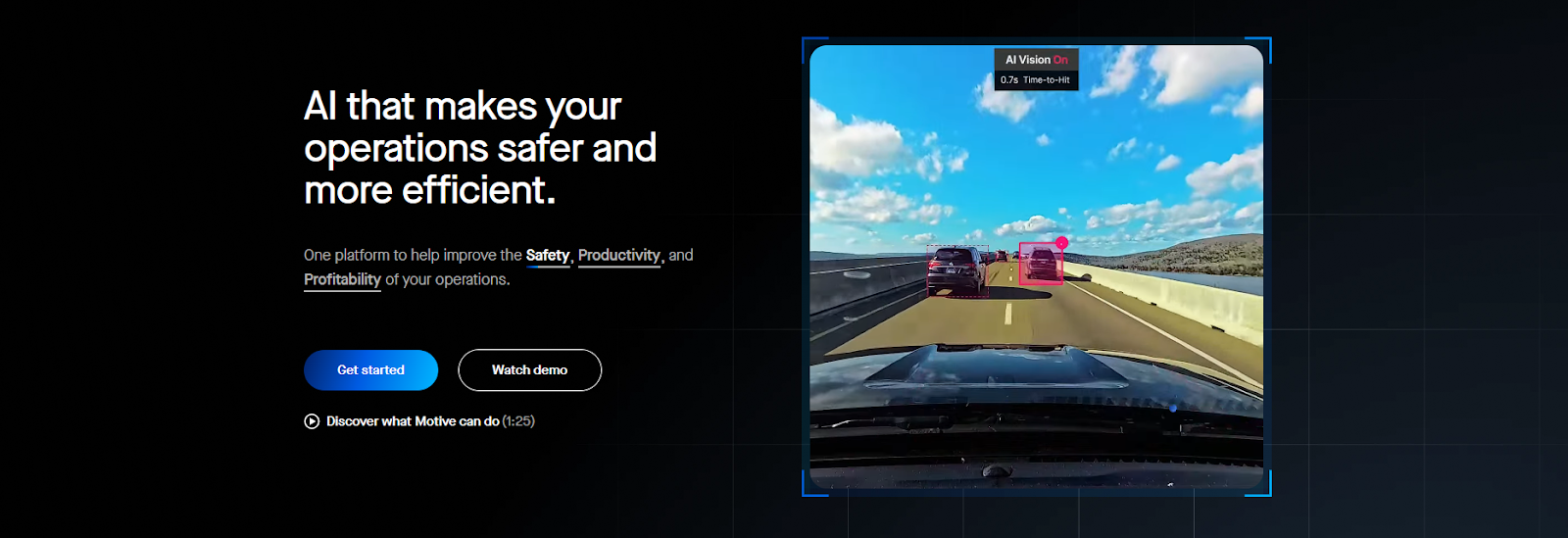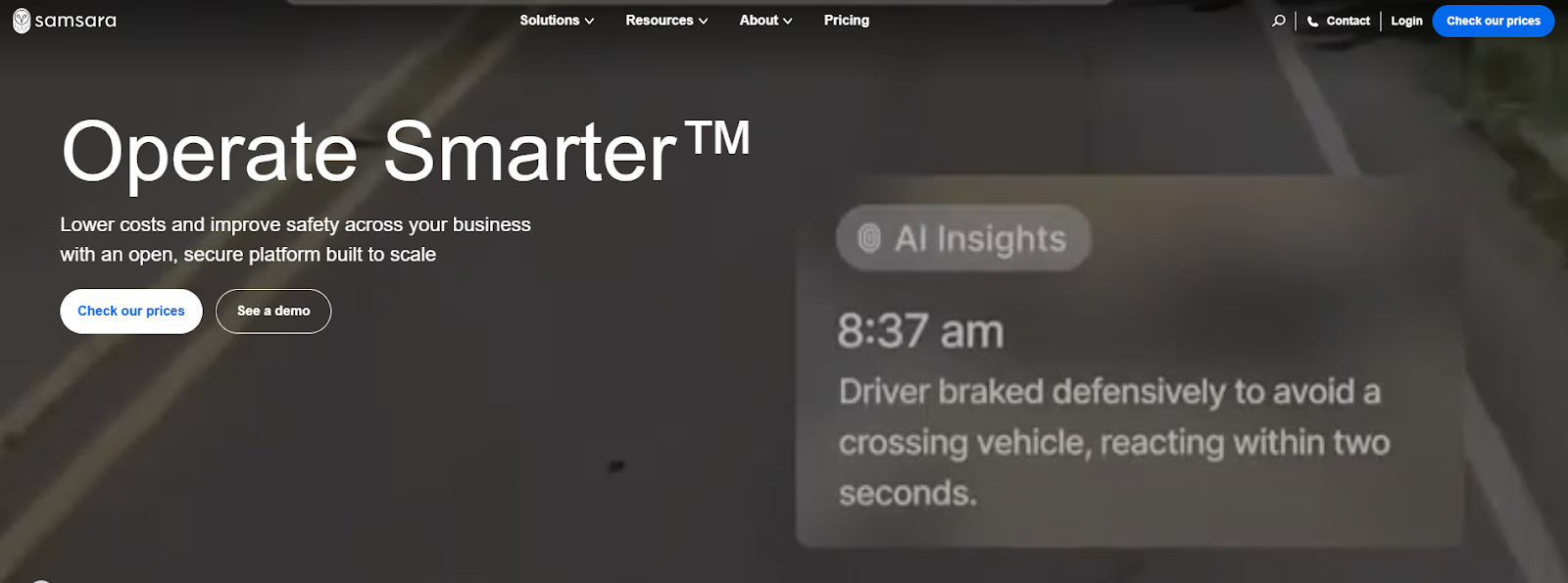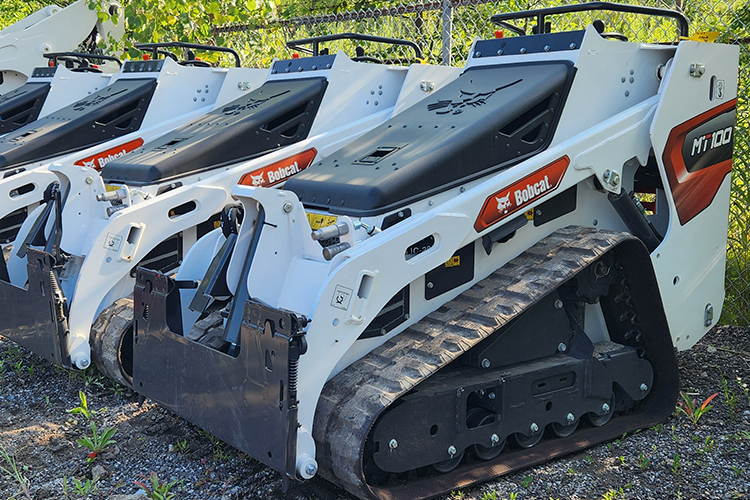Fleets today face higher costs, stricter compliance rules, and rising safety risks. That’s why a reliable fleet GPS tracker is a critical tool for protecting assets, reducing liability, and improving efficiency. But with so many options, identifying the best GPS tracker for fleet vehicles in 2025 can feel overwhelming.
Some systems focus on driver safety, others on compliance or affordability, and a few aim to cover everything. This guide reviews the top fleet tracking devices available today, weighing strengths and limitations for your specific operations.
The Best GPS Trackers for Fleet Vehicles in 2025
Below, we’ve broken down the top fleet tracking devices in 2025, highlighting what each does best, where it falls short, and who it’s right for.
1. Track Star – Best for Unified Fleet and Equipment Visibility

Track Star is the best GPS tracker for fleet vehicles because it combines GPS tracking, video telematics, dash cams, and enterprise asset management (EAM) into one platform. GPS and telematics provide real-time visibility of all assets with IoT devices, while EAM adds the financial and lifecycle view, together giving fleets the complete picture of their assets.
Pros:
- Real-time tracking across vehicles, equipment, and almost any type of asset
- Integrated fleet dash cams and video telematics
- Hardware-agnostic (OEM, OBD-II, BLE, and third-party sensors)
- Enterprise asset management (EAM) so fleets can manage everything
- Ideal for government, utilities, first responders, rental equipment, and mixed fleets
- Intuitive, easy-to-use platform designed for both technical and non-technical teams
Cons:
- Designed for larger,data-driven operations. May feel robust for very small fleets
- Initial setup requires integration across multiple asset types and systems
Verdict: If your fleet needs visibility beyond vehicles alone, Track Star is the strongest option. It delivers a GPS tracking system for fleets that covers vehicles, equipment, and infrastructure in one secure platform.
2. Verizon Connect – Best for Scalability and Routing

Verizon Connect is widely reviewed as one of the most powerful GPS tracking systems for fleets, with refresh rates around 30 seconds, advanced routing, and dispatch tools. It scales well for very large operations, though it can be costly for smaller fleets.
Pros:
- Strong routing and dispatch tools
- Enterprise-ready scalability
- Wide compliance coverage
- Integrated dash-cam support
Cons:
- Higher costs than most competitors
- Complexity may overwhelm smaller operators
- Limited customer support
Verdict: Verizon Connect is a good fit for large enterprise fleets that need advanced routing and nationwide scalability. For mid-sized fleets, the cost may outweigh the benefits.
3. Azuga – Best for Safety-focused Tracking

Azuga has built its reputation on safety. With AI dash cams, plug-and-play devices, driver scorecards, and fuel card integration, it’s a good fit for managers who want visibility into driver behavior and risk reduction.
Pros:
- Simple plug-and-play hardware
- AI-powered dash cams for coaching and liability protection
- Driver scorecards and safety metrics
- Compliance and fuel tracking tools
Cons:
- Reporting is less advanced than enterprise systems
- Limited equipment visibility beyond vehicles
Verdict: Azuga is best for fleets that want an easy-to-deploy fleet GPS tracker with a strong emphasis on driver safety. It’s less suited for organizations that need broader asset or mixed fleet tracking.
4. Motive (formerly KeepTruckin) – Best for Affordability and Compliance

Motive offers one of the most affordable ways to get started with a GPS tracking system for fleets. It provides ELD compliance, vehicle diagnostics, and telematics features in a user-friendly interface.
Pros:
- Budget-friendly pricing plans
- User-friendly dashboard and app
- Solid ELD and compliance features
- Good fit for small to mid-sized fleets
Cons:
- Limited asset tracking beyond vehicles
- Fewer advanced integrations compared to leaders like Track Star or Samsara
Verdict: Motive works well for smaller fleets or those primarily focused on ELD compliance and cost control. It won’t cover complex equipment visibility needs.
5. Samsara – Best for Advanced IoT and AI Safety

Samsara is known for its cutting-edge IoT ecosystem. It combines GPS tracking, AI safety tools, video telematics, and diagnostics into a cloud-based platform. It’s highly advanced, but hardware and subscription costs can add up quickly.
Pros:
- Advanced AI and IoT features
- Video telematics and driver coaching tools
- Strong diagnostics and compliance coverage
- Real-time route optimization
Cons:
- High upfront and ongoing costs
- Overbuilt for small or budget-conscious fleets
Verdict: Samsara is a strong option for fleets that want the top fleet tracking devices with the latest AI and IoT features, and have the budget to support it.
Features to Prioritize When Choosing a Fleet GPS Tracker
When deciding on the best GPS tracker for fleet vehicles, it’s important to look beyond brand names. The right system should provide the tools you need to protect assets, cut costs, and keep operations compliant. These are the features that matter most in 2025:
Real-time Location Tracking
Fleets need to know where vehicles are at any moment. Systems that update every 30 seconds or faster allow managers to react quickly to delays, reroute drivers, or respond to emergencies. This is now considered the baseline for any fleet GPS tracker.
Video Telematics and Dash cams
A GPS tracking system for fleets without video lacks context. Dash cams provide evidence in case of accidents, protect drivers against false claims, and support coaching. Truck camera systems with multiple views (forward, driver-facing, side) add another layer of liability protection.
Driver Behavior Monitoring
Unsafe driving behaviors like speeding, harsh braking, and distraction increase liability and costs. The best fleet GPS tracker solutions combine telematics with driver scorecards, alerts, and coaching tools to improve safety.
Maintenance and Diagnostics
Downtime is expensive. Modern GPS tracking systems integrate vehicle diagnostics and maintenance alerts to keep fleets road-ready. Features like engine fault codes, hours-of-service monitoring, and predictive maintenance extend vehicle lifespans and reduce breakdowns.
Geofencing and Alerts
Geofencing allows fleets to create digital boundaries around worksites or service areas. If a vehicle or piece of equipment leaves its assigned area, managers are alerted immediately. This helps prevent theft and ensures accountability across operations.
Integration and Scalability
The top fleet tracking devices integrate with ELDs, ESRI layers, OEMs, records management systems (RMS), and even computer-aided dispatch (CAD) systems for public safety fleets. APIs make it easier to unify fleet data with other business platforms.
Scalability is also critical; your system should grow with your fleet, not force you to start over when you expand.
Final Thoughts
The best GPS tracker for fleet vehicles in 2025 depends on your priorities. Verizon Connect leads in scalability, Azuga excels in safety, Motive offers affordability, and Samsara delivers advanced IoT features. But if your operation demands true visibility across mixed fleets, including vehicles, equipment, and infrastructure, Track Star is the clear leader.
Want to learn more? Book a demo with Track Star today and eliminate the blind spots that cost fleets time, money, and safety.

.png)

